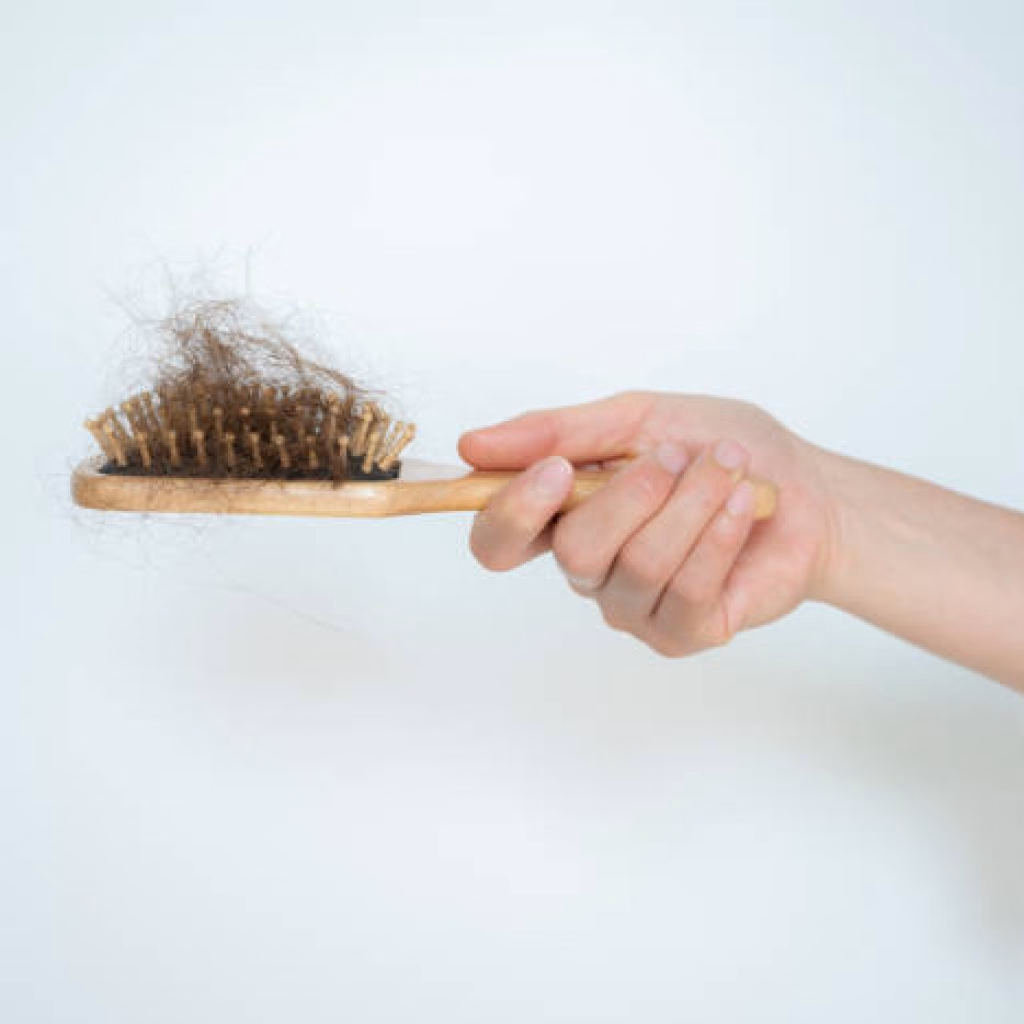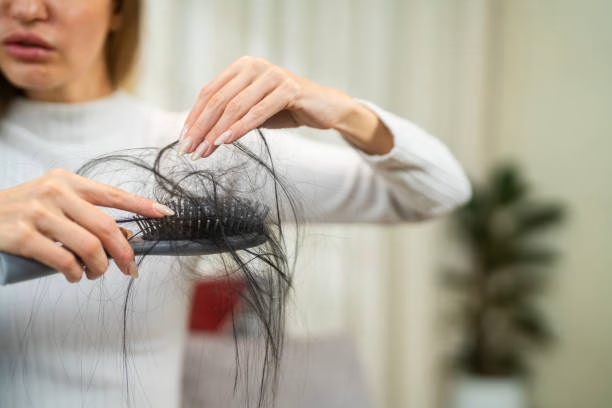Introduction: Why Hair Fall Peaks During Certain Seasons
Every year, millions of people worldwide notice that their hair seems to shed more than usual during seasonal changes. Whether it’s the monsoon humidity, winter dryness, or post-summer damage, the phenomenon of seasonal hair falls sparks both anxiety and misinformation.

Is it normal? Is it permanent? Should you panic if your hairbrush collects extra strands in September or March?
To answer these questions, Orbis Chronicle consulted dermatologists, trichologists, and patient case studies to separate fact from fiction.
The Science of Hair Growth: Why Shedding Happens
Dermatologists emphasize that to understand seasonal shedding, one must first understand the hair growth cycle:
- Anagen (Growth Phase): Lasts 2–7 years. About 85–90% of your hair is in this stage.
- Catagen (Transition Phase): A short, 2–3 week phase where hair growth slows.
- Telogen (Resting Phase): Lasts about 3 months. Around 10–15% of hair is in this stage.
- Exogen (Shedding Phase): Old hairs fall out to make room for new growth.
During seasonal changes, more hairs shift into the telogen or exogen phase, creating the impression of sudden, heavy loss.
📌 Key Fact: According to the Journal of Investigative Dermatology, women tend to shed more hair in late summer and early autumn due to biological cycles influenced by daylight exposure.
Also read, 69 Cases and 19 Deaths Linked to Brain Eating Amoeba in Kerala
Case Study: Anjali’s Monsoon Hair Fall Scare
Anjali, a 32-year-old IT professional from Bengaluru, panicked when she noticed clumps of hair clogging her shower drain during August.
“I thought I was developing permanent bald patches. I started oiling my hair every day and avoiding shampoo, thinking that would save it,” she recalls.
When she consulted a dermatologist, she was told her shedding was part of seasonal hair fall, worsened by monsoon humidity. Within two months, her shedding reduced naturally, proving it was temporary.
This case highlights how misinformation and panic often lead to unnecessary treatments and anxiety.
Myth 1: Seasonal Hair Fall Equals Permanent Hair Loss
Reality: Dermatologists clarify that seasonal shedding is temporary. Most people lose about 50–100 hairs per day, but during shedding seasons, the number may rise to 150–200 hairs daily.
Unless it continues beyond three months or shows patchy baldness, it’s not permanent hair loss.
Myth 2: Washing Hair Daily Causes More Hair Fall
Reality: “People often blame shampooing, but washing only removes hair that is already ready to shed,” explains Dr. Shilpa Reddy, Consultant Dermatologist at Fortis Hospitals.
In fact, avoiding washes can lead to scalp buildup, which may worsen conditions like dandruff, indirectly increasing hair breakage.
Myth 3: Oiling Can Completely Stop Seasonal Hair Fall
Reality: Oiling may condition the scalp, but it cannot alter the natural growth cycle. Excessive oiling without proper cleansing can even clog follicles, leading to fungal infections.
Dermatologists recommend oiling once or twice a week, followed by gentle cleansing.
Myth 4: Only Women Experience Seasonal Shedding
Reality: Seasonal hair fall affects men too. However, it is often overlooked in men because it overlaps with male pattern baldness (androgenetic alopecia).
A dermatologist’s evaluation helps distinguish between seasonal loss and genetic conditions.
Myth 5: Seasonal Hair Fall Is Always Abnormal
Reality: Mild seasonal shedding is biologically normal. Concern arises only if:
- Hair fall continues for 3+ months
- Hair density reduces significantly
- Bald patches appear
In such cases, further investigation is required.
Environmental & Biological Triggers of Seasonal Hair Fall
Dermatologists identify several reasons why seasonal shedding happens:
- Humidity & Monsoon Rains: Weakens roots and increases fungal scalp infections.
- Winter Dryness: Leads to brittle hair shafts and breakage.
- UV Damage in Summer: Prolonged sun exposure causes oxidative stress on follicles.
- Dietary Changes: Seasonal diets low in iron, protein, or vitamins may aggravate shedding.
- Stress & Sleep: Lifestyle fluctuations, especially during festive seasons, play a major role.
Dermatologist-Recommended Hair Care During Seasonal Changes
To minimize shedding, experts suggest:
✅ Balanced Nutrition – Include spinach, eggs, nuts, fish, and legumes.
✅ Gentle Cleansing – Use sulfate-free shampoos, avoid overwashing.
✅ Conditioning Treatments – Hydration masks and serums reduce breakage.
✅ Scalp Sun Protection – Hats or scarves shield follicles from UV damage.
✅ Stress Management – Yoga, meditation, and adequate sleep help.
“Hair is often a reflection of overall health. If you eat poorly, sleep less, or stress more, your hair will show it,” says Dr. Kiran Raj, Trichologist at Apollo Hospitals.
Advanced Treatments If Hair Loss Persists
If seasonal shedding turns chronic, dermatologists may recommend:
- PRP (Platelet-Rich Plasma) Therapy
- Low-Level Laser Therapy
- Topical Minoxidil
- Oral Supplements (biotin, iron, zinc)
These should be done only under medical supervision, not as over-the-counter fixes.
Global Insights: How Seasons Affect Hair Worldwide
- Europe & North America: Studies show more shedding in autumn due to reduced daylight hours.
- India & Southeast Asia: Monsoon-induced fungal infections exacerbate shedding.
- Middle East: Intense summer heat and dehydration are primary culprits.
This proves seasonal hair fall is universal, though its intensity varies regionally.
Psychological Impact: Why Hair Fall Feels Worse Than It Is
Hair is deeply tied to identity, beauty, and confidence. A 2023 survey by the International Journal of Trichology found that 72% of women associate increased seasonal hair fall with anxiety or depression.
Dermatologists emphasize awareness campaigns to reduce panic and encourage professional consultation instead of self-medicating.
Final Word on Seasonal Hair Fall: Myths vs. Facts
Seasonal hair fall is a temporary, biological process — not a sign of irreversible baldness. While myths like “washing causes hair fall” or “oiling prevents shedding” persist, dermatologists stress that awareness, nutrition, and proper care matter more.
So, the next time you notice extra strands in your comb, remember: your body is simply renewing itself. Panic is unnecessary, but informed care is essential.



